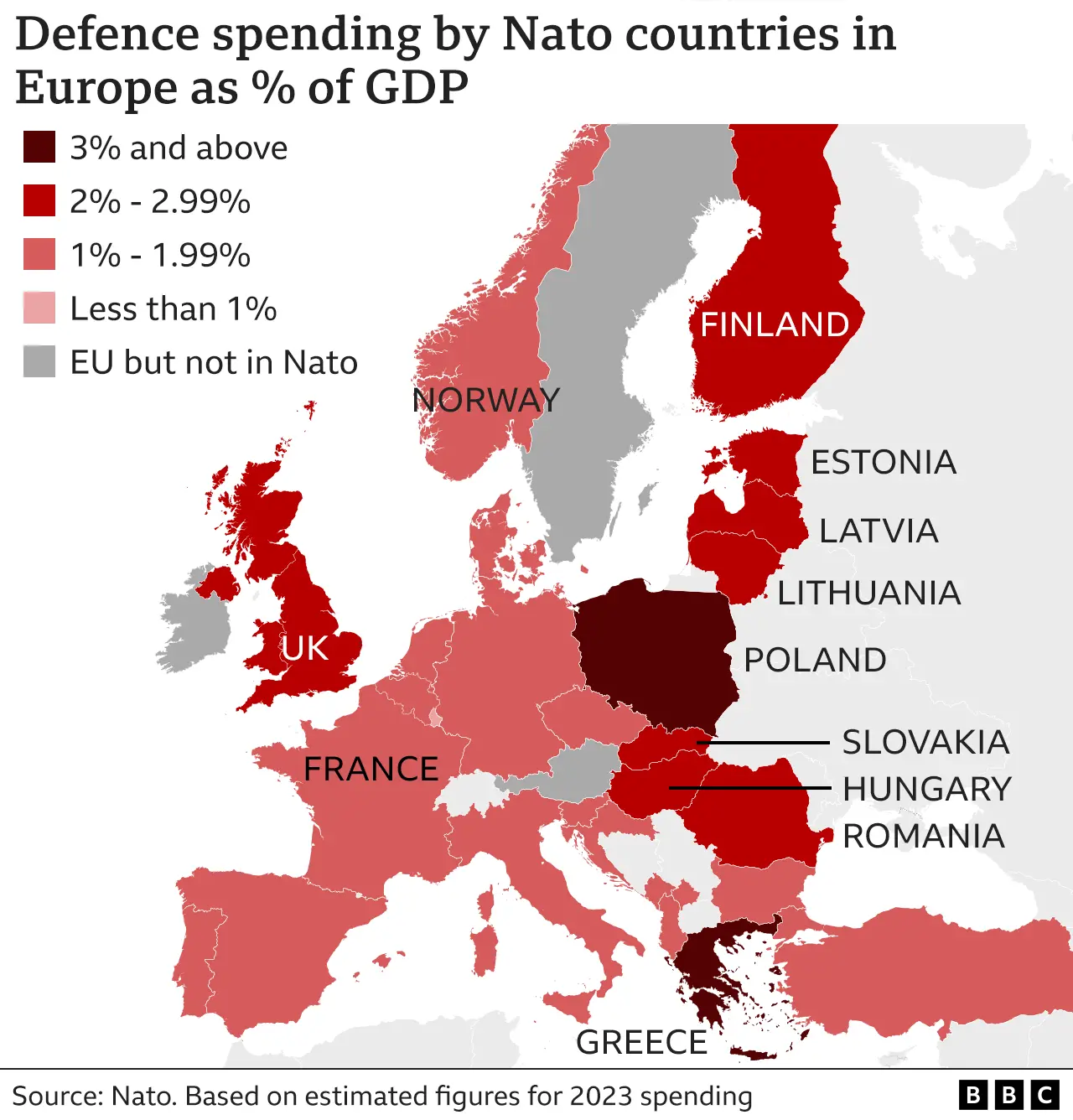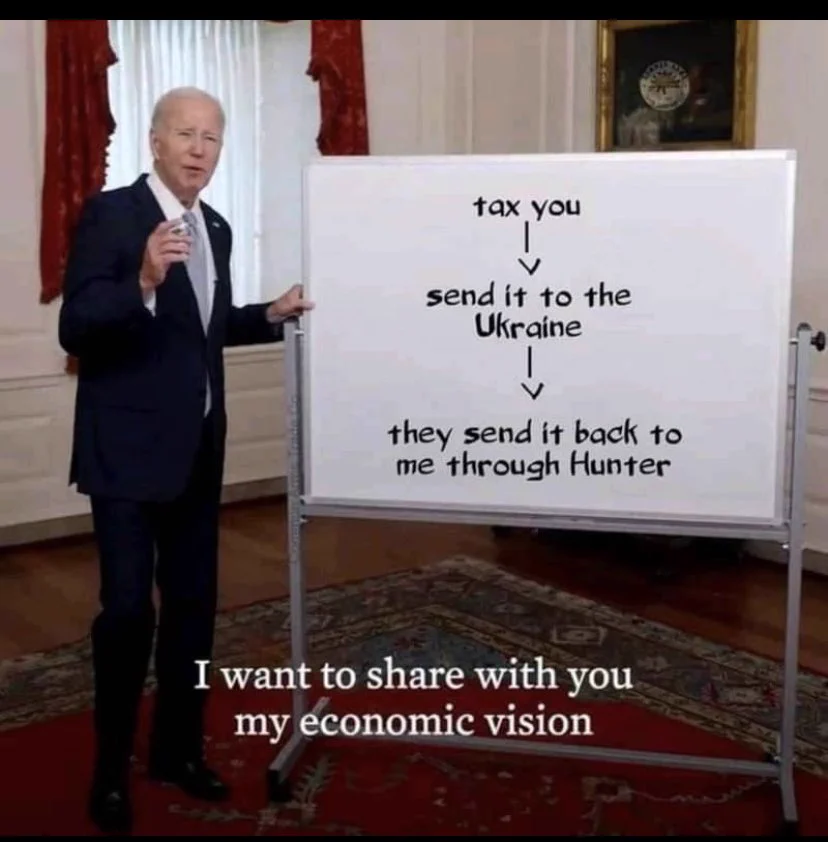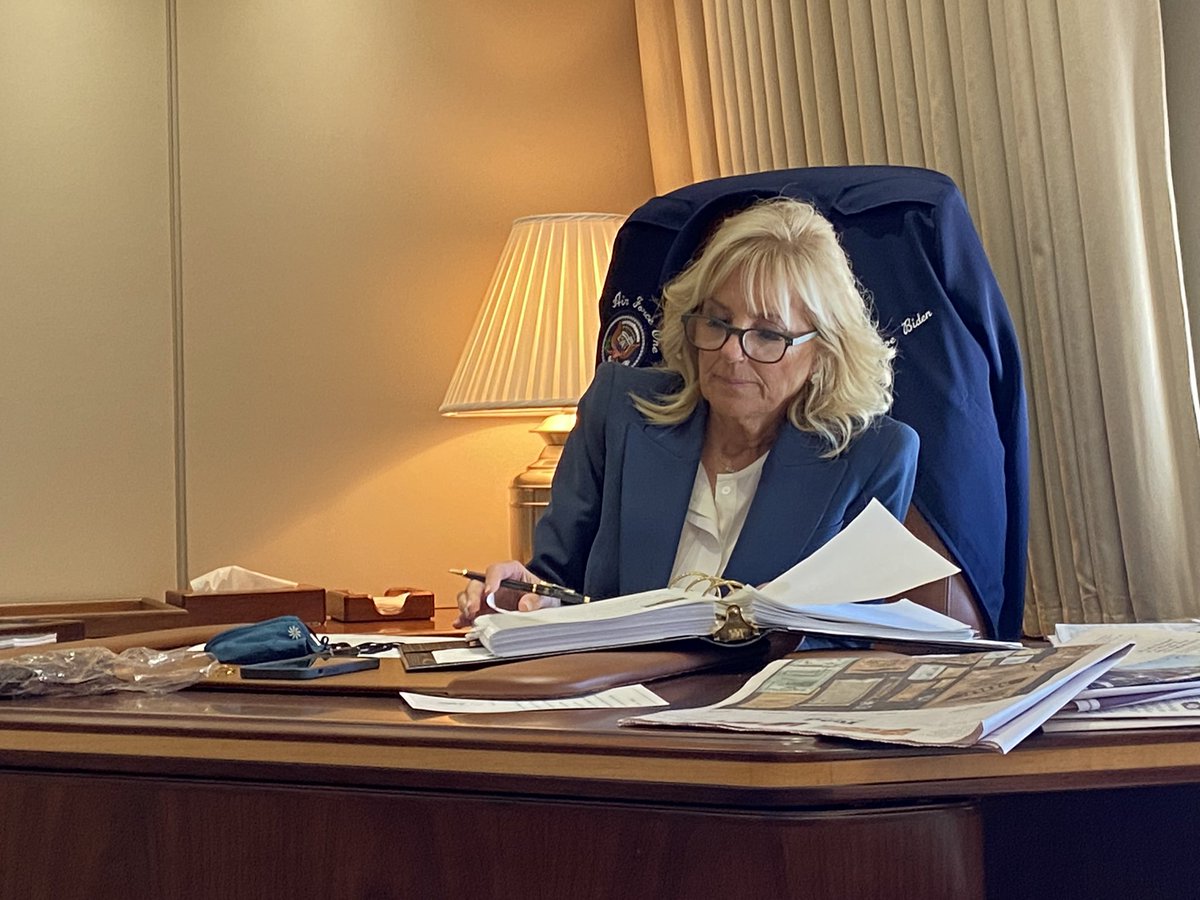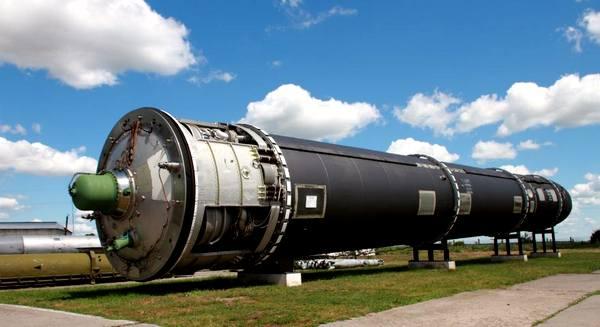Why has the U.S. increased our spending 6 percent to NATO since 2021? What is Europe doing to protect itself? The joy ride is coming to an end for NATO.
Alarm Grows Over Weakened Militaries and Empty Arsenals in Europe
~ The Wall Street Journal, December 11, 2023
“The British military—the leading U.S. military ally and Europe’s biggest defense spender—has only around 150 deployable tanks and perhaps a dozen serviceable long-range artillery pieces. So bare was the cupboard that last year the British military considered sourcing multiple rocket launchers from museums to upgrade and donate to Ukraine….”
“France, the next biggest spender, has fewer than 90 heavy artillery units….”
“The German army only has enough ammunition for two days of intense fighting…..”
The U.S. is paying for their Socialist Utopia by paying for their defense.

The graphic that follows, via Visual Capitalist’s Marcus Lu, breaks down the expected defense expenditures of NATO members in 2023, using data from NATO and based on current prices and exchange rates.
The U.S. is broke. The joy ride is coming to an end for NATO. Here it is from Zero Hedge:
NATO defines defense expenditure as payments made by a national government, excluding regional, local, and municipal authorities, specifically to fulfill the requirements of its armed forces. It requires members to spend at least 2% of its GDP on defense.
A major component of defense expenditure includes payments for active armed forces personnel as well as retired pensioners. Expenditures for stockpiling war reserves of military equipment or supplies are also included. Additionally, it encompasses expenditures for peacekeeping and humanitarian operations, as well as the destruction of weapons.
The U.S. is by far the largest contributor to NATO’s budget. In 2023, the country accounted for $860 billion spent by the organization, representing 68% of the total expenditure. This amount is over 10 times more than that of the second-placed country, Germany.
| Country | 2023 Defense Spending (USD, Millions)* |
|---|---|
| 🇺🇸 United States | $860,000 |
| 🇩🇪 Germany | $68,080 |
| 🇬🇧 United Kingdom | $65,763 |
| 🇫🇷 France | $56,649 |
| 🇮🇹 Italy | $31,585 |
| 🇵🇱 Poland | $29,105 |
| 🇨🇦 Canada | $28,950 |
| 🇪🇸 Spain | $19,179 |
| 🇳🇱 Netherlands | $16,741 |
| 🇹🇷 Türkiye | $15,842 |
| 🇳🇴 Norway | $8,814 |
| 🇷🇴 Romania | $8,481 |
| 🇫🇮 Finland | $7,325 |
| 🇬🇷 Greece | $7,125 |
| 🇧🇪 Belgium | $7,076 |
| 🇩🇰 Denmark | $6,775 |
| 🇭🇺 Hungary | $5,036 |
| 🇨🇿 Czechia | $5,033 |
| 🇵🇹 Portugal | $4,167 |
| 🌐 Other | $12,400 |
*Expected spending in 2023, based on July 2023 data from NATO.
U.S. defense spending, within the context of NATO, aims to support European allies, deter adversaries like Russia, and gain access to additional military resources, among other objectives.
In 2018, then-President Trump sent letters to NATO allies demanding that they spend more on defense to meet the 2% minimum target. In recent years, however, the U.S. has increased its spending, experiencing a 6% jump compared to 2021.
It has had the desired results of the author of a paper in 1993 on how to keep NATO relevant since the fall of the USSR. – author – George Soros
To constitute a closed society, you need to mobilize society behind the state. Since communism is dead and universal ideolo- gies are generally discredited, a closed society needs to be based on a national or ethnic principle. To establish such a principle, you need an enemy; if you don't have one, you need to invent it. In the post-communist world, you don't need to go very far to find an enemy because communism generally neglected or oppressed national aspirations.
...It is very tempting to appeal to nationalist emotions in order to divert attention from economic failure. Meciar is doing it right now in Slovakia. Iliescu in Romania relies on extreme nationalists for his parliamentary majority, and Antall in Hungary flirted with doing so. But, paradoxically, when economic disinte- gration is too advanced, it may be too late to mobilize society behind a national cause. That was certainly the case in Ukraine, where Kravchuk tried to play the nationalist card in connection with the Black Sea Fleet but failed, and it may also be true of Russia. If that is so, the danger of a nationalist dictatorship emerging in Russia -- which is, after all, the most important coun- try from a security point of view -- will be the greatest after the economy has stabilized.
...The United Nations might have become an effective orga- nization if it were under the leadership of two superpowers coop- erating with each other. As it is, the United Nations has already failed as an institution which could be put in charge of U.S. troops. This leaves NATO as the only institution of collective security that has not failed, because it has not been tried. NATO has the potential of serving as the basis of a new world order in that part of the world which is most in need of order and stability. But it can do so only if its mission is redefined. There is an urgent need for some profound new thinking with regard to NATO. ...
THE FUTURE OF NATO The original mission was to defend the free world against the Soviet empire. That mission is obsolete; but the collapse of the Soviet empire has left a security vacuum which has the potential of turning into a "black hole." This presents a different kind of threat than the Soviet empire did. There is no direct threat from the region to the NATO countries; the danger is within the region, and it concerns conditions within states as much as relationships between states. Therefore, if NATO has any mission at all, it is to
project its power and influence into the region, and the mission is best defined in terms of open and closed societies. Closed societies based on nationalist principles constitute a threat to security because they need an enemy, either outside or within. But the threat is very different in character from the one NATO was constructed to confront, and a very different approach is required to combat this threat. It involves the building of democratic states and open societies and embedding them in a structure which precludes certain kinds of behavior. Only in case of failure does the prospect of military intervention arise. The constructive, open society building part of the mission is all the more important because the prospect of NATO members inter- vening militarily in this troubled part of the world is very remote. Bosnia is ample proof.
* George Soros, PROSPECT FOR EUROPEAN DISINTEGRATION, The Soros Foundations, New York, 29 September 1993. eee ese 11
The best of the swamp.










